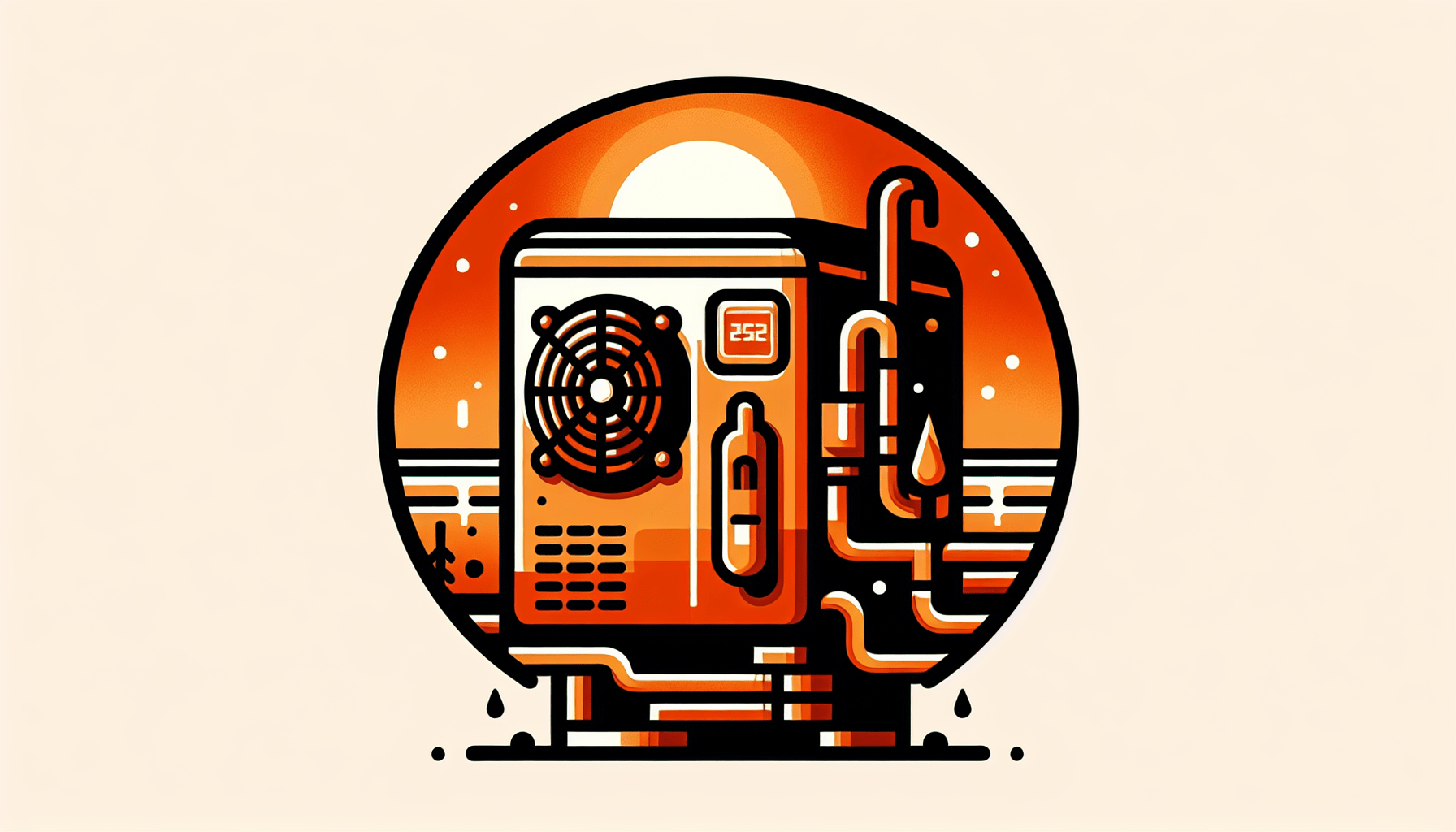Heat pump high pressure lockouts can be a real headache. They’re the silent alarm bells of your system, signaling that something’s amiss in the depths of your geothermal guardian. Imagine it’s the coldest day of the year, and instead of basking in the warmth of your eco-friendly home, you’re wrapped in blankets, troubleshooting a rebellious heat pump.
That’s the moment you realize the importance of understanding and fixing high pressure lockouts. With a knack for deciphering these cryptic messages from my own heat pump adventures, I’m here to guide you through the fog. We’ll navigate the common causes and unveil the solutions that will restore your sanctuary’s warmth without a hitch.
Together, we’ll ensure your geothermal heat pump doesn’t just whisper its woes but sings a tune of efficiency and reliability.

Understanding Heat Pump High Pressure Lockouts

The Mystery of High Pressure Lockouts Figure outed
You’ve probably heard the term ‘high pressure lockout’ thrown around when discussing heat pump issues. But what does it actually mean? Simply put, it’s your heat pump’s way of saying, "I’m under too much pressure!" This safety feature kicks in to prevent damage when the system’s refrigerant pressure skyrockets beyond safe levels. Think of it as a circuit breaker for your heat pump’s compressor.
Common Culprits Behind the Pressure
Now, let’s dig into the usual suspects that cause these lockouts. First up, dirty or clogged air filters. You know the drill: a dirty filter is like trying to breathe with a pillow over your face-not fun for you or your heat pump. Restricted airflow from a grimy filter forces the compressor to work overtime, hiking up the pressure. Another perpetrator? Poor airflow. Whether it’s blocked vents or a fan on the fritz, if air can’t move freely, pressure mounts, triggering a lockout.
Refrigerant Pressure: A Delicate Balance
Refrigerant is the lifeblood of your heat pump, and its pressure needs to be just right. Too high, and you’re in lockout territory. This can happen if there’s too much refrigerant or if there’s a kink in the system, like a faulty expansion valve. It’s a delicate dance between too much and too little, and your heat pump’s performance hinges on maintaining that balance.
The Ripple Effect of Lockouts on Heat Pump Performance
When a high pressure lockout occurs, it’s not just an isolated event-it’s a full stop for your heat pump. The system shuts down to protect itself, leaving you in the lurch. This means no heating or cooling until the issue is resolved. It’s a clear signal that something’s amiss, and it’s time to investigate before small issues snowball into costly repairs.
Navigating the Troubleshooting Terrain
You’re eco-conscious, so you know the importance of keeping your geothermal heat pump in top shape. When faced with a high pressure lockout, it’s time to roll up your sleeves. Check those filters, inspect the airflow, and consider calling in a pro to gauge the refrigerant pressure.
In the context of HeatFromBelow.com, understanding and troubleshooting high pressure lockouts is necessary for maintaining an efficient and sustainable geothermal heating system. Whether you’re a DIY enthusiast or a professional, knowing the ins and outs of your heat pump’s pressure issues is key to ensuring a greener, more reliable source of comfort for your home.
Troubleshooting Heat Pump High Pressure Lockouts

Safety First: Preparing to Troubleshoot Your Heat Pump
Before you dive into the guts of your heat pump, For that reason: safety isn’t just a suggestion, it’s a must. Cut the power. Yes, completely. You’re about to become an electrical detective, and you don’t want any surprises. Grab your tools, your manual, and let’s get to work.
Inspecting Air Filters and Coils: The Usual Suspects
You know the drill. Dirty filters and coils are like cholesterol for your heat pump – they clog up the system. Pull out that filter. Is it looking like a dust bunny convention? Replace it. Now, those coils. Layers of grime? Clean them gently, but thoroughly. It’s simple: clean systems breathe easier and work better.
Refrigerant Pressure Levels: Finding the Sweet Spot
Refrigerant is the lifeblood of your heat pump. Too much pressure and it’s hypertension for the system. You’ll need gauges for this – and a bit of know-how. Check the pressure against the manufacturer’s specs. Not matching up? You might have a leak or need a recharge. This is where you might want to call in a pro.
Capillary Tubes and Expansion Valves: The Pressure Regulators
These parts are the unsung heroes of pressure balance. The capillary tubes and expansion valves need to be in top shape. If they’re blocked or damaged, pressure goes haywire. Inspect them for any signs of wear or blockage. Sometimes, a good cleaning does the trick; other times, you’re looking at a replacement job.
Resetting the High Pressure Switch: The Control Freak
Found the high-pressure switch? It’s usually a little red button, begging to be pushed. But hold on. Only reset it after you’ve fixed the issue causing the lockout. Pushing it without a fix is like hitting snooze on a blaring alarm – it’ll just come back louder. Once you’ve made your repairs, give it a press and watch the system come back to life.
Regular Maintenance: The Key to Pressure Lockout Prevention
You’ve heard it before, but I’ll say it again: regular maintenance is your best friend. It’s the difference between a smooth-running heat pump and a high-pressure lockout headache. Schedule it. Stick to it. Your heat pump will thank you with efficient, uninterrupted service.






